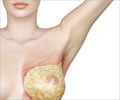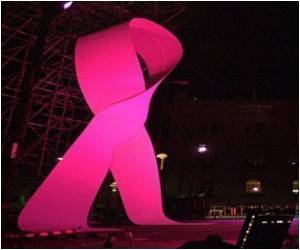The term “triple-negative breast cancers” first appeared in medical literature in 2006 and ever since it has been steadily appearing in several publications, a move that indicates its growing popularity among the specialists.
Triple-negative breast cancers have been defined as tumors that are devoid of the expression of estrogen receptor (ER), progesterone receptor (PR), and HER2.It must be noted that 12-17% of women with breast cancer have - triple-negative breast cancer.
This category of breast cancer includes other molecular subtypes of breast cancers such as:
• Claudin-low tumors which have cells with stem-cell like properties
• Interferon-rich subgroup with better prognosis than the triple-negative breast cancers
• Normal breast–like subgroup, with a disproportionate high numbers of stromal and normal cells
Basal-like breast cancers are categorized as one of five intrinsic subgroups of breast cancer.
Its features include -absence or reduced expression of ER, absence of HER2 over expression, and also the expression of genes that are usually found in normal breasts.
Studies have shown that basal-like breast cancers are more likely not to spread to the lymph nodes and hence be node-negative, compared to other breast cancers.
BRCA 1 is a breast cancer susceptibility gene and a mutation in this gene can be found in certain forms of hereditary breast cancers. A link has been established between the BRCA1 pathway and basal-like breast cancers.
The great majority of tumors showing BRCA1 mutation (especially those found in women who are diagnosed before 50 years) have phenotypic features similar to those of nonhereditary basal-like cancers.
This could indicate that the BRCA1 pathway may be dysfunctional in nonhereditary basal-like tumors.
Common Features
• Triple-negative and basal-like breast cancers are a collection of different diseases.
• Triple-negative and basal-like tumors have a high histological grade
• They account for about 15% of all invasive breast cancers.
• Both these cancers are seen to occur more frequently in young Black and Hispanic women in comparison to young women of other racial or ethnic groups.
• More than 75% of tumors with breast-cancer susceptibility gene (BRCA1) mutations have a triple-negative phenotype or a basal-like phenotype or both.
• Cancerous cells from both these cancers display cell-surface markers that resemble breast-cancer stem cells
• In comparison to other types of breast cancers both triple-negative and basal-like breast cancers have greater chances of metastasizing to the viscera (especially to the lungs and brain) but not likely to the bone
• Both these cancers show a correlation between the size of the primary tumor and prognosis
• Chemotherapy is the mainstay of treatment
Risk factors
There is a combination of genetic, environmental and societal factors that contribute to a person’s susceptibility to develop breast cancer.
The risk factors for triple-negative and basal-like tumors include the following:
• Increased parity
• High hip-waist ratio
• Early menarche
• High body mass index
• Reduced breast feeding
Catch 22
Many breast cancers exhibit features of both triple-negative breast cancers and basal-like breast cancers.
The majority of triple-negative breast cancers (approximately 80%) are basal-like breast cancers, and the majority of basal-like cancers are triple-negative breast cancers. Hence there are claims that they are effectively the same.
However, clinical, microarray, and immune histochemical studies show that this is not true and that they have their own distinct features. Seen from the genetic perspective too, both triple-negative and basal-like breast cancers are greatly heterogeneous.
However it must be noted that there is no internationally- consented definition for these two subgroups of breast cancers.
Prognosis
Many studies haveindicated that triple-negative and basal-like breast cancers are linked to poor prognosis.
The ER status is useful in predicting the prognosis of invasive breast cancer. ER positivity predicts the person’s response to endocrine therapy. Being negative for ER, progesterone receptor (PR), and HER2, is linked to aggressive histology, poor prognosis, and unresponsiveness to the routine endocrine therapies, shorter survival, and BRCA1-related breast cancer.
Hence triple-negative tumors have poor outcome.
There appears to be a sharp dip in survival during the first 3 to 5 years after diagnosis.
After a decade relapse occurs-- more so among patients with ER-positive cancers than those with ER-negative cancers.
Conclusions
As a group triple-negative and basal-like breast cancers display aggressive clinical behavior, but there exists subgroups of these cancers that are very sensitive to chemotherapy. As expected these subgroups show good prognosis, when subjected to chemotherapy.
The need of the hour is to identify triple negative tumors that are sensitive to specific or a combination of chemotherapy agents. The role of target therapy in containing triple-negative breast cancer is currently being researched.
Source-Medindia














